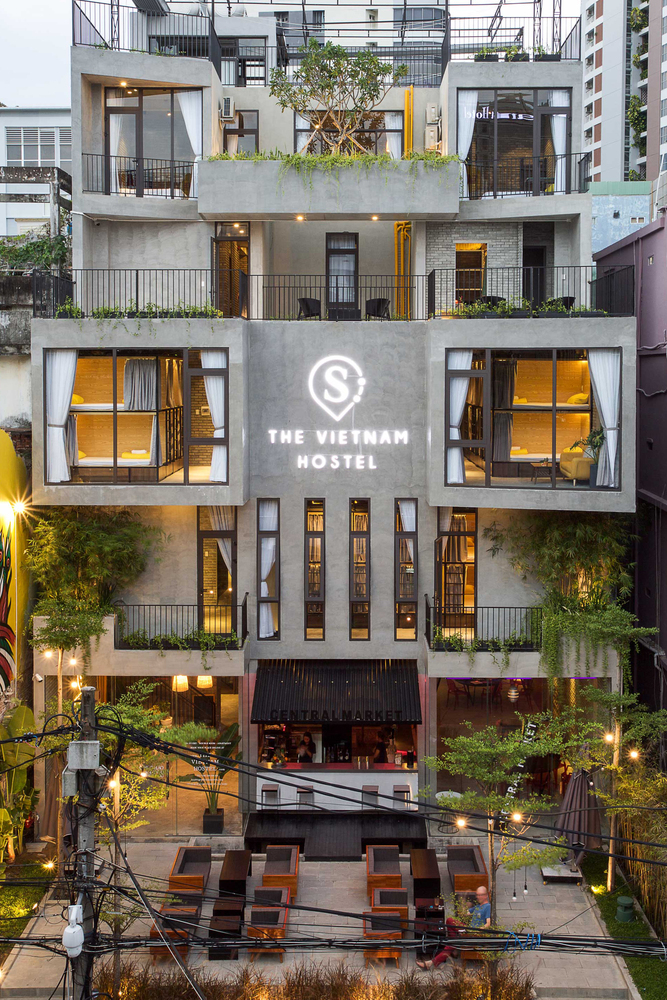De Karel Doorman Ibelings van Tilburg Architecten
2013-02-13 00:00
架构师提供的文本描述。德卡洛门卫包括翻新的购物大楼:特尔梅伦和一个新增的住宅建筑。新的住宅大楼高达70米,包括114套公寓。它建在鹿特丹Ter Meulen大楼的顶上。这是一个不寻常的项目,因为新的建筑实际上是建立在现有结构的柱和基础上。唯一的补充是一对混凝土升降机轴,这也提供稳定。在荷兰的一个工程中,这种施工技术是非常规的,因为它的主要结构是钢结构,而不是像混凝土和石灰石这样的重石材。现有的Ter Meulen大楼已恢复原状,并再次容纳三层购物楼。现有的Ter Meulen大楼二楼和屋顶设有停车设施。这样就增加了114个appartement。在鹿特丹市中心。
Text description provided by the architects. De Karel Doorman consists of the renovation of a shopping building: Ter Meulen and an added residential building. The new residential building is up to 70 metres in height and includes 114 apartments. It is built on top of the Ter Meulen building in Rotterdam. This is an unusual project as the new building literally rests on the columns and foundations of the existing structure. The only additions are a pair of concrete lift shafts which also provide stability. The construction technique is unconventional for a project in the Netherlands, as the main structure is in steel instead of heavy stone-like materials as concrete and limestone. The existing Ter Meulen building is restored to its original conditions and once again houses three shopping floors. Parking facilities are provided on the second floor and on the roof of the existing Ter Meulen building. In this way 114 appartements are added. In the heart of the city center of Rotterdam.
© J. Versnel en J.F.H. Roovers
特尔梅伦大厦在鹿特丹的居民心中有一个特殊的位置。它建于1948年,是特梅尔、瓦森和范沃斯特的购物中心,由范登布鲁克和巴凯马设计。这座建筑有着广泛的玻璃幕墙,以其透明的外观,在它的时代意义非凡。“眼见为实”是我们的座右铭。这座建筑在20世纪70年代和80年代被部分拆除和重新开发,包括增加了两层购物层。有特色的街角露台被牺牲了,为新的入口让路。Ibelings van Tilburg建筑建议不拆除这座建筑,而是将Ter Meulen建筑恢复到原来的状态。1977年增加的两层楼都被拆除,以便为新的公寓大楼腾出地方。
The Ter Meulen building has a special place in the hearts of the inhabitants of Rotterdam. It was constructed in 1948 as a shopping centre for Ter Meulen, Wassen and Van Vorst and designed by Van den Broek and Bakema. With its extensive glazed facades the building was remarkable in its time for its transparent appearance. “See and buy” was the motto. The building was partly demolished and redeveloped in the 1970s and 80s, including the addition of two shopping floors. The distinctive corner terrace was sacrificed to make way for a new entrance. Ibelings van Tilburg architecten proposed not to demolish the building, but to restore the Ter Meulen building to its original condition. Both of the in 1977 added floors are demolished to make place for the new appartment building.
在特默伦建筑的最初建设时期,对建筑计算的要求远高于目前的要求。在重新考虑计算时,该结构的承载能力似乎远远超过了原设计所需的水平。在最初的设计中,通过一个带有柱和梁的门式系统来实现稳定性。对于新的设计,施工团队提出了两个新的混凝土稳定核心的概念,不仅为公寓建筑提供稳定,而且还将新旧结构连接在一起。
At the time of the original construction of the Ter Meulen building the demands for constructural calculations were far more higher then nowadays. While revisiting the calculations it appeared that the loadbearing capacity of the structure was well above what was needed in the original design. In the original design, stability was achieved through a portal system with columns and beams. For the new design the construction team came up with the concept of two new concrete stabilising cores, not only providing stability to the appartment building but also linking the old and new structures together.
这一做法使现有大楼增加了16层。新建筑的最大重量为250公斤/平方米,包括墙、立面、天花板、装置和管道。这就排除了使用标准住宅建筑系统的可能性。这样的传统系统可以有1,000至1,200公斤/平方米的建筑面积。因此,决定以钢为主要承重结构。尊重的态度是修复工作的起点,也是住宅建筑设计的起点。当特默伦建筑本身恢复到原来的状态时,新的附加物的设计是抽象的。这座新的公寓大楼由一层上光的外皮组成,上面印有印纹。门廊和画廊位于玻璃外壳的后面。公寓的外墙是俄勒冈州松树。
This approach allowed the addition of 16 new floors to the existing building. The maximum weight of the new-build was 250 kg/m2, including; the walls, facades, ceilings, installations and pipework. This ruled out the use of a standard residential construction system with concrete floors and walls. A traditional system like that can have a weight of 1,000 to 1,200 kg/m2 of floor area. Therefore it was decided that the main loadbearing structure should be in steel. A respectful approach is the starting point for the restoration work as well as for the design of the residential building. While the Ter Meulen building itself is restored to its original conditions, the design for the new addition is abstract. The new appartment building consists of a glazed external skin, with a print. The loggias and galleries are located behind the glazed shell. The façade of the apartments themselves is clad with Oregon pine.
增加额外楼面对环境的影响是显而易见的:原来的建筑物是从拆除中节省下来的,因此避免了浪费。在屋顶上增加额外的楼层也是空间利用的一种整体形式,屋顶现在被用作“第二层”表面。此外,新楼层在城市一级增加了价值。零售商位于地下室,一楼和一楼。每层也有一个夹层,使总零售面积达到11,500平方米。一楼的玻璃隔墙恢复到原来的状态。最初的Ter Meulen大楼只有3家商店,但翻修后的房屋将为许多小型零售商提供空间。司机可以使用这三部车中的一部,把车停在二楼的阁楼上,也可以停在屋顶上。这种方法允许156辆车停在大楼内。114套公寓分布在七层相连的楼层。西楼九层,东楼六层。公共用途的遮蔽屋顶花园位于10楼(高40米),位于两卷书之间。在这两卷书之间,离地面40米的地方,是一个公用的屋顶花园。
One effect on the enviroment of adding additional floors is obvious: The original building is saved from demolition and thus waste is prevented. Adding additional floors above the roof is also an intesive form of space use, the roof now is used as ‘second’ surface level. In addition, the new floors added value at the urban level. The retailers are located in the basement, on the ground floor and the first floor. Each floor also has a mezzanine, bringing the total up to 11,500 m2 of retail area. The glazed partitions on the ground floor were restored to their original state. The original Ter Meulen building contained only 3 shops, but the renovated premises will offer space for many smaller retailers. Using one of the three carlifts, drivers can park their vehicles on the second storey with its mezzanine floor, or on the roof. This method allows 156 cars to be parked within the building. The 114 apartments are spread across seven connected floors. Nine floors in the western tower and six in the eastern tower. A sheltered roof garden for communal use is located at the 10th floor (40meters up) and is situated between the two volumes. Between these two volumes, 40m above ground level, is a roof garden for communal use.
 举报
举报
别默默的看了,快登录帮我评论一下吧!:)
注册
登录
更多评论
相关文章
-

描边风设计中,最容易犯的8种问题分析
2018年走过了四分之一,LOGO设计趋势也清晰了LOGO设计
-

描边风设计中,最容易犯的8种问题分析
2018年走过了四分之一,LOGO设计趋势也清晰了LOGO设计
-

描边风设计中,最容易犯的8种问题分析
2018年走过了四分之一,LOGO设计趋势也清晰了LOGO设计


.jpg)

.jpg)

.jpg)



.jpg)

.jpg)



.jpg)

.jpg)

.jpg)









































